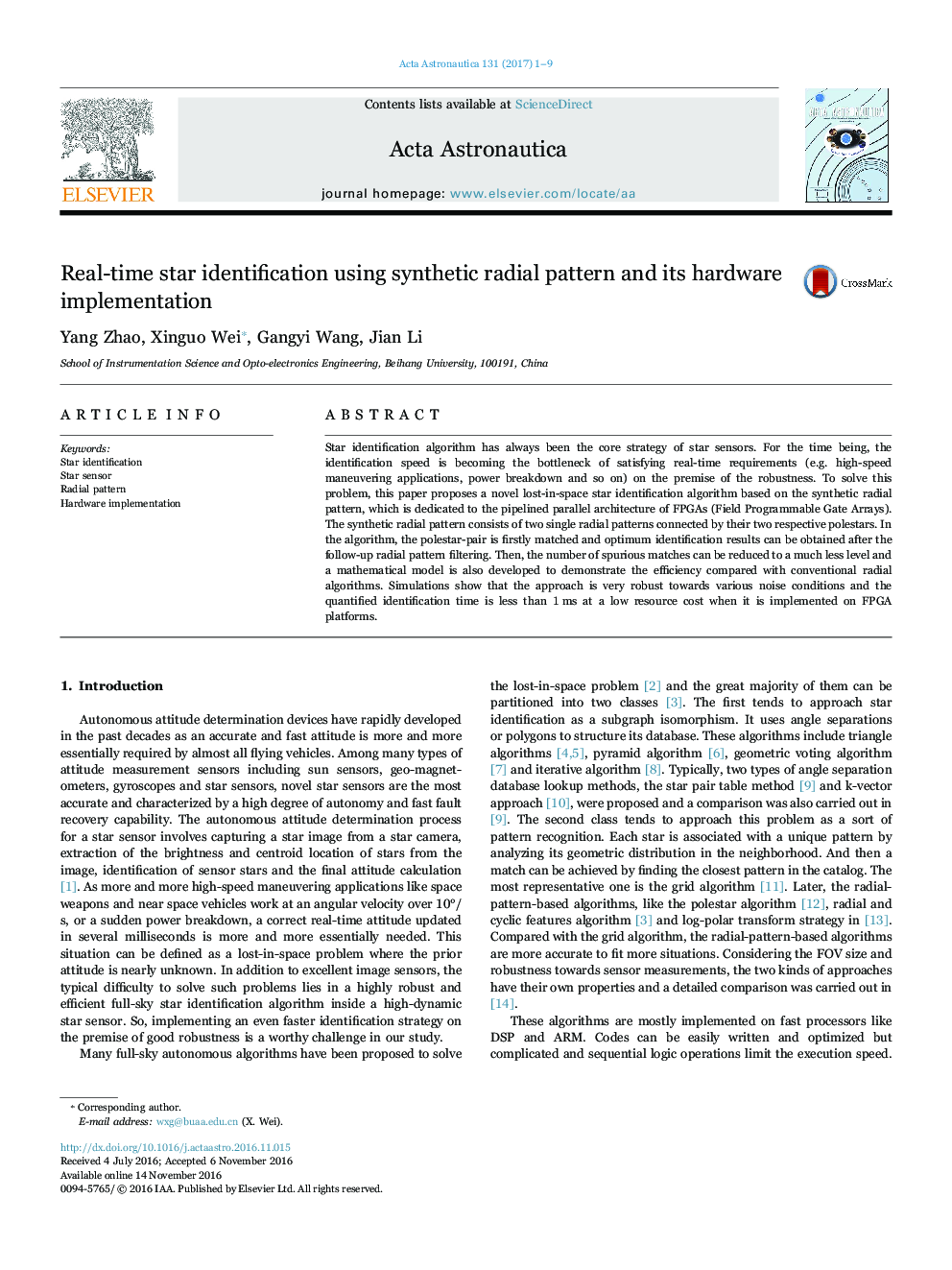| Article ID | Journal | Published Year | Pages | File Type |
|---|---|---|---|---|
| 5472191 | Acta Astronautica | 2017 | 9 Pages |
Abstract
Star identification algorithm has always been the core strategy of star sensors. For the time being, the identification speed is becoming the bottleneck of satisfying real-time requirements (e.g. high-speed maneuvering applications, power breakdown and so on) on the premise of the robustness. To solve this problem, this paper proposes a novel lost-in-space star identification algorithm based on the synthetic radial pattern, which is dedicated to the pipelined parallel architecture of FPGAs (Field Programmable Gate Arrays). The synthetic radial pattern consists of two single radial patterns connected by their two respective polestars. In the algorithm, the polestar-pair is firstly matched and optimum identification results can be obtained after the follow-up radial pattern filtering. Then, the number of spurious matches can be reduced to a much less level and a mathematical model is also developed to demonstrate the efficiency compared with conventional radial algorithms. Simulations show that the approach is very robust towards various noise conditions and the quantified identification time is less than 1Â ms at a low resource cost when it is implemented on FPGA platforms.
Related Topics
Physical Sciences and Engineering
Engineering
Aerospace Engineering
Authors
Yang Zhao, Xinguo Wei, Gangyi Wang, Jian Li,
